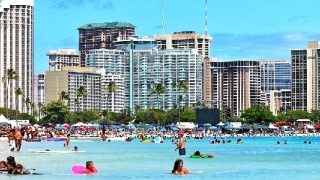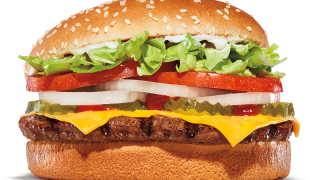Visitors to Hawaii often discuss the costs of accommodations, taxes, and fees, as well as airfare and rental cars. But for many, one of the real surprises comes when they head to the grocery store.
According to the latest Cost of Living Index, groceries in Honolulu now cost about 20 percent more than even in New York City. That puts Hawaii at the very top of the nation in food costs, confirming what both residents and travelers have long experienced.
Here’s how this plays out in our daily shopping. A gallon of milk typically costs $7 to $8, although it is often less at Costco. A dozen eggs is $6 or more, and a box of cereal can easily run $8 to $10 or higher. Even basic produce, bread, and beverages consistently cost far more than on the mainland.
The numbers do add up quickly, and visitors staying in condos or rentals who plan to cook some meals are often caught off guard. As one visitor commented, “We spent more on groceries than our flights, but it forced us to cook more and explore smaller markets.”
Why are Hawaii groceries so expensive?
Everything sold in Hawaii either needs to be imported or produced in limited local quantities. That means high shipping costs, higher labor costs, and a much smaller market with less competition. Energy costs and commercial rents add yet another layer to prices.
Consider the impact of the Jones Act, which increases shipping costs to Hawaii, and the gap has widened again over the past two years. Visitors and residents alike are struggling, some unexpectedly, with food budgets.
A Canadian couple who have visited Maui for years commented, “We would love to see the people of Maui be a priority; they should have decent housing and be able to afford food. We’re not sure when or if we will travel there again.”
Dining out costs are also soaring.
Groceries are only half the story. As we reported in our recent piece on dining out, Hawaii now leads the nation in restaurant spending. That means travelers feel the pressure whether they buy groceries or choose to eat out.
For families, the cost of a Hawaii vacation is increasingly defined by the price of food in every form. One longtime reader put it plainly, “Hawaii is slowly killing its golden goose with higher prices, especially food and accommodations.” And if that weren’t enough, the cost of groceries forces visitors to seek workarounds.
Where Hawaii visitors find some relief.
There are strategies to help offset the high grocery bills. Costco is often the first stop for visitors looking to stock up on essentials. Safeway and Foodland loyalty cards can help bring prices down somewhat, especially on staple items. Don Quijote in Honolulu remains a favorite for both poke bowls and bargain shopping. Farmers’ markets can be a better value and offer far higher quality for fresh produce, while roadside stands sometimes still offer fruit at a fraction of supermarket prices.
Some readers shared the strategies that work for them. “Costco and the grocery store are always day one. We eat breakfasts and lunches in the condo and save restaurants for dinner,” said one. Others see it very differently. “We never stop at Costco. Instead, we buy locally from Foodland and Napili Market, where poke and sushi are fresh daily.”
It’s no surprise that Costco has become Hawaii budget travel’s secret weapon. For many visitors, it is now a ritual stop on arrival. With food costs perched at the highest in the country, Costco often sets the tone for the week ahead. Visitors stock up on meals, drinks, beach gear, and even gas, then avoid the grocery aisle for a few days. That strategy is about more than savings. It is also about convenience, efficiency, and predictability.
Travelers share their sticker shock.
For many, no amount of planning entirely erases the shock. One visitor told us, “Groceries, meals out, and gas are even more expensive than they are in the Bay Area. Not a lot of people can afford this right now.” Unexpectedly, that became one of my favorite parts of the trip.”
Some travelers even say that the cost of food alone has them reconsidering future trips. “We have traveled to the islands for 11 years,” wrote one couple. “The biggest change is how unwelcome we are made to feel, and groceries and added fees have doubled. This may be our last trip to paradise for a long while.”
A longtime resident added, “Have you seen the prices in the grocery stores here? If we didn’t have Costco, I don’t know what people would do. Living in paradise is not paradise. Most don’t even see the ocean unless their job takes them close enough.”
The bottom line on Hawaii groceries.
Hawaii’s beauty and culture still draw nearly ten million visitors a year, but the cost of living and visiting here is unlike anywhere else in the country. Groceries now top the list as a significant expense, even ahead of big cities. Sticker shock at the checkout is unfortunately part of the Hawaii experience.
Have you been surprised by the cost of groceries in Hawaii, or did you already expect to pay more?
Get Breaking Hawaii Travel News







The message it being sent loud and clear to many visitors that you are certainly less welcome than before. We have been visiting Maui for 25 years and both the attitude and cost has changed dramatically. Now a green tax is being added. You also don’t have to far to see the lack of progress over two plus years in Lahaina to realize those managing both the project and money are lost. Probably our last year visiting.
Never again. My family and I were in Maui a month ago now and what a disappointment. A disappointment because we have visited Maui many times and Its a place where time seems to stand still. The moment you arrive at the OGG airport its always the same. A beautiful breezy day, you can hear palms trees miles away from the wind and everything looks the same as it did the last time we were there. However, the one thing that seems to staidly change is the amount of money we seem to spend and go through while we are in Maui. I want you readers to keep in mind we are not out there going to high end restaurants or golf courses we are there to spend time as a family and enjoy the beaches and just taking a much needed break. Come back to Maui the locals say we are ready to welcome all you visitors back to the island we need help building back our economy. At who’s cost and expense not the locals and not Maui County that’s for sure. It’s us visitors who are taking the hit and an outrageous hit
It’s really not that bad
I’ve been coming to Hawaii for 38 years and I’m not going to stop over fees and higher prices. Tourists go to Florida theme parks and on cruises and spend just as much if not more. There’s ways to save money and be able to visit and see your Ohana without breaking the bank. You just have to use a bit of common sense.
Yes, food prices were surprising. We’ve been visiting the Islands regularly for the past 30 years. We took a long break during & after Covid. Went last June for 11 days for the first time in 8 years. Wow, groceries and restaurants broke our budget! Dinner for 2 at a medium value restautant ( 2 entrees & 1 Alcoholic drink) plus tax & tip $100. Only went out once to a higher end restaurant $200. McDonalds breakfasts for 2 over $20. We actaully decided to really cheap out for a couple of days & purchased ABC store Sandwiches (which were surprisingly good) $8.99 each??
I remember food costing more in the islands but this was off the charts. And I come from California where everything is high. I can’t even imagine how the locals survive.
And people ask how can you live here? 1/2can of spam, rice, and egg. And let’s not forget Vienna sausage, Seaweed and 7/11. Food good and cheap. If you go to grocery stores you pay $150.00 every 3 days. No to much money. We stick to ramen and local aunties selling fresh produce on side of road cheap yeah because they know you one local and know you by name along with your family. But only locals get good prices.
Safeway is really expensive compared to most all other grocery stores, we’ve lived here in Kona for 3 hrs now, rarely go to Safeway…it’s a tourist trap
Yes, Safeways here in California are way more expensive than other supermarkets as well.